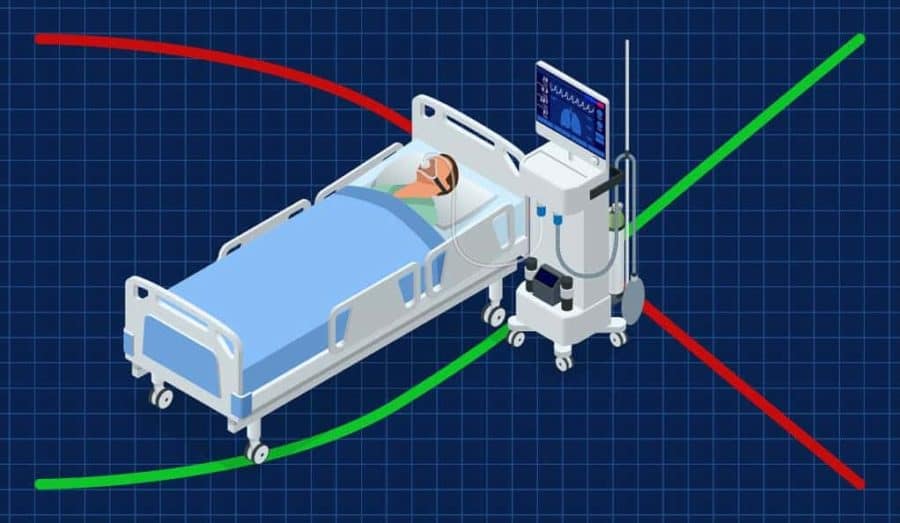As soon as Alison Galvani learned of the COVID-19 virus in China and its devastating spread there, she foresaw what might happen to healthcare facilities in the United States. The Yale professor and colleagues at the Center for Infectious Disease Modeling and Analysis (CIDMA) quickly began analyzing various scenarios for COVID-19’s spread in the U.S. — and how self-isolation rates by symptomatic individuals could affect demand for Intensive Care Unit (ICU) beds.
Their findings appear in the current edition of the Proceedings of the National Academy of Sciences, and the bottom line is clear: Without dramatic action, there won’t be enough beds for the sickest patients.
If the United States is to avoid the catastrophic scenes in Italy, where patients fill hospital hallways and doctors face agonizing choices over who receives care and who is left to die, even “mildly symptomatic” people must self-isolate to minimize disease transmission, according to the researchers. And expansion of hospital equipment must accelerate.
“It is crucial in terms of minimizing the imbalance of supply and demand for ICU beds for people to stay home and stem transmission,” said Galvani, the Burnett and Stender Families Professor of Epidemiology at the Yale School of Public Health and CIDMA’s director. “In the absence of self-isolation, the health care system will be overwhelmed. We are already seeing that happen in New York City.”
Galvani and team assessed a number of possible scenarios in which the primary variables were the number of people experiencing COVID-19-related symptoms of any degree, the likelihood of the virus spreading to others if symptomatic individuals self-isolate, and the subsequent impact on available ICU beds as the outbreak peaks.
In the worst scenario — in which no one with symptoms self-isolates — the study projected the country would need almost four times more ICU beds specifically for people who become critically ill with COVID-19 — or about 130,000 in all — than would be available. Sixty-five percent of the nation’s 98,000 ICU bed supply is routinely occupied by other patients. If 20% of mildly symptomatic people were to self-isolate within 24 hours of symptom onset, the need for ICU beds would fall by nearly half — though need would still exceed capacity.
“The U.S. is the only major country in the world that does not guarantee paid sick leave and paid family sick leave,” said Galvani. “Our results underscore the importance of giving everyone the means to stay at home if they or their children feel unwell.”
“Mildly symptomatic” refers to people experiencing a range of cold- and flu-like symptoms, said Galvani, from a slight cough to weakness requiring bed rest — in other words, all people with any signs of illness but who do not require hospitalization.
Preserving available ICU beds for the most severe COVID-19 patients, and limiting how many people get the virus, is essential, said Galvani.
“The majority of ICU beds are already occupied, and you can’t discharge people with other serious illnesses who also need intensive care,” she added. “A shortage of ICU beds affects the mortality from other diseases too.”
Galvani stressed that ICU beds involve more equipment and staff than traditional hospital beds.
While people in the U.S. generally seem to be adhering to calls for social distancing, emphasizing the importance of the measure is necessary to avoid overwhelming hospitals and to ensure critically ill patients receive timely treatment, she said.
“Self-isolation reduces and delays the peaks, both of which are fundamental to minimizing the number of deaths from COVID-19,” she said.
Delaying disease spread also allows more time for the production of additional ICU beds and ventilators, which must happen in parallel with self-isolation efforts, Galvani said.
“We need all hands on deck to ramp up production now,” she said.
The study is titled “Projecting hospital utilization during the COVID-19 outbreaks in the United States.”
Yale researchers who contributed to the study include postdoctoral fellows Affan Shoukat, Chad Wells, and Pratha Sah and CIDMA Associate Director Abhishek Pandey.


